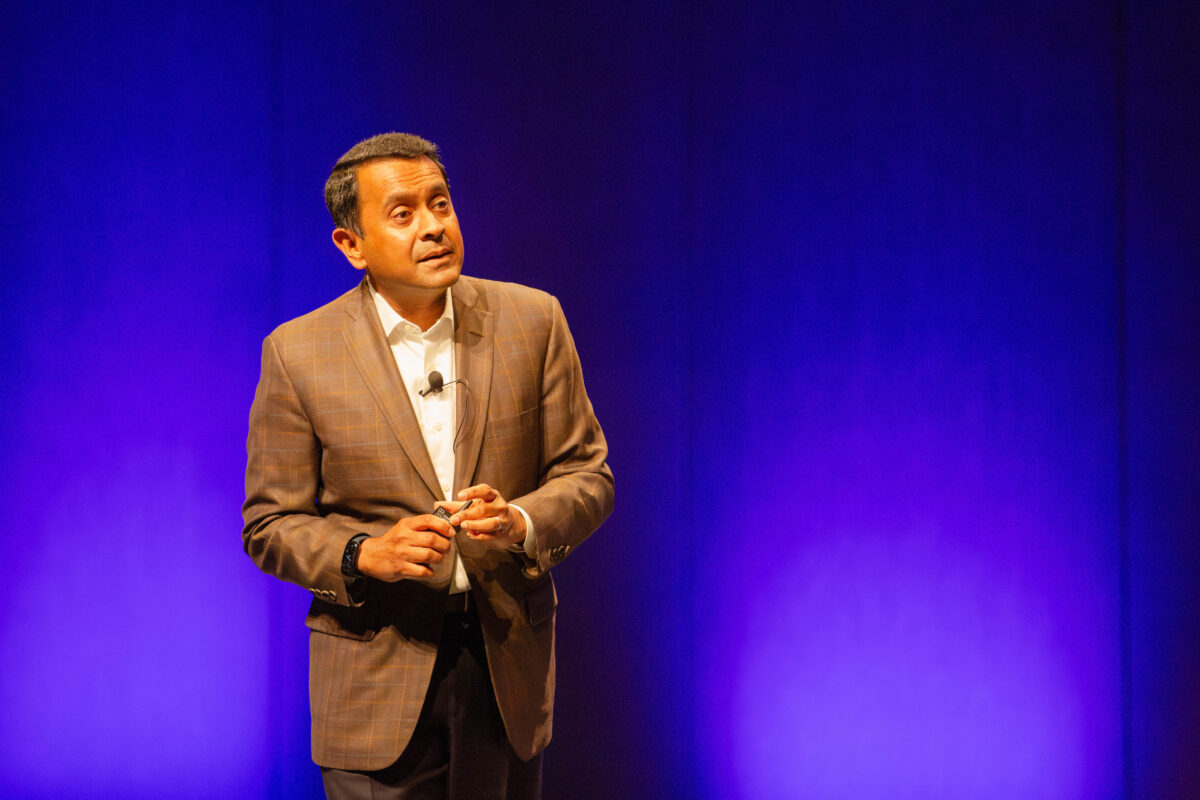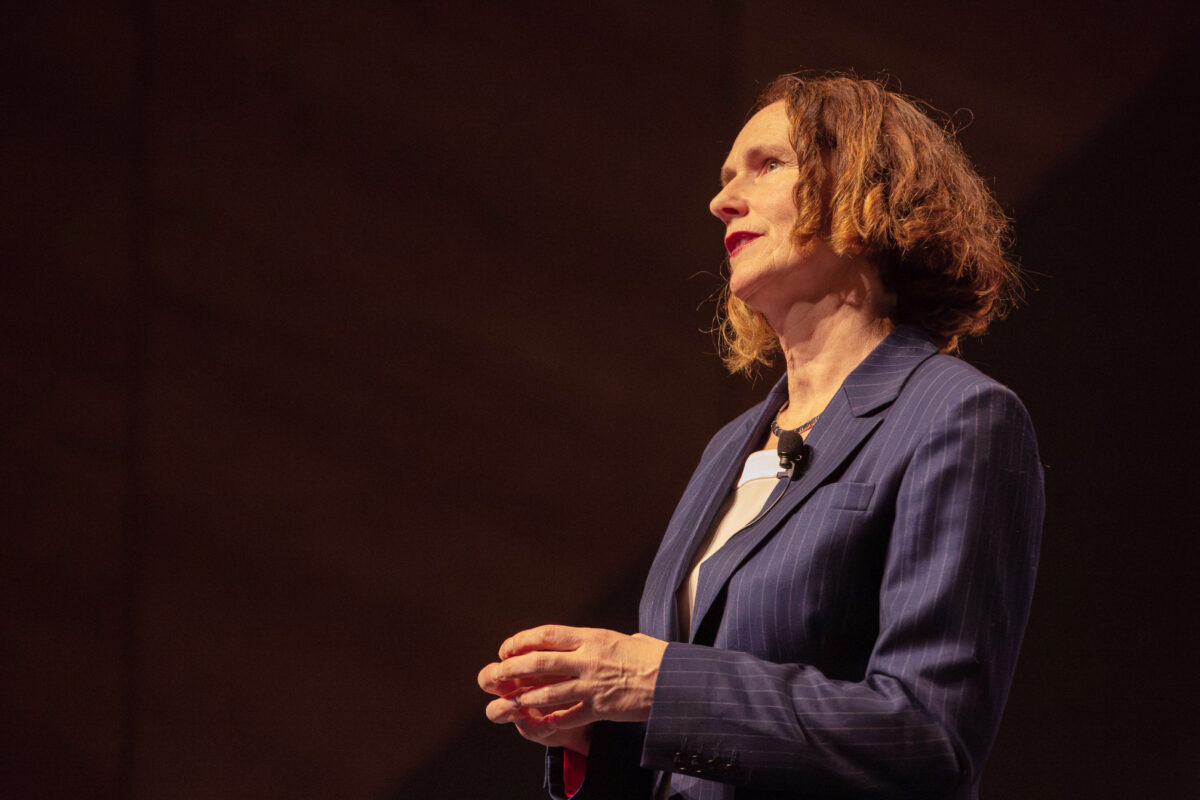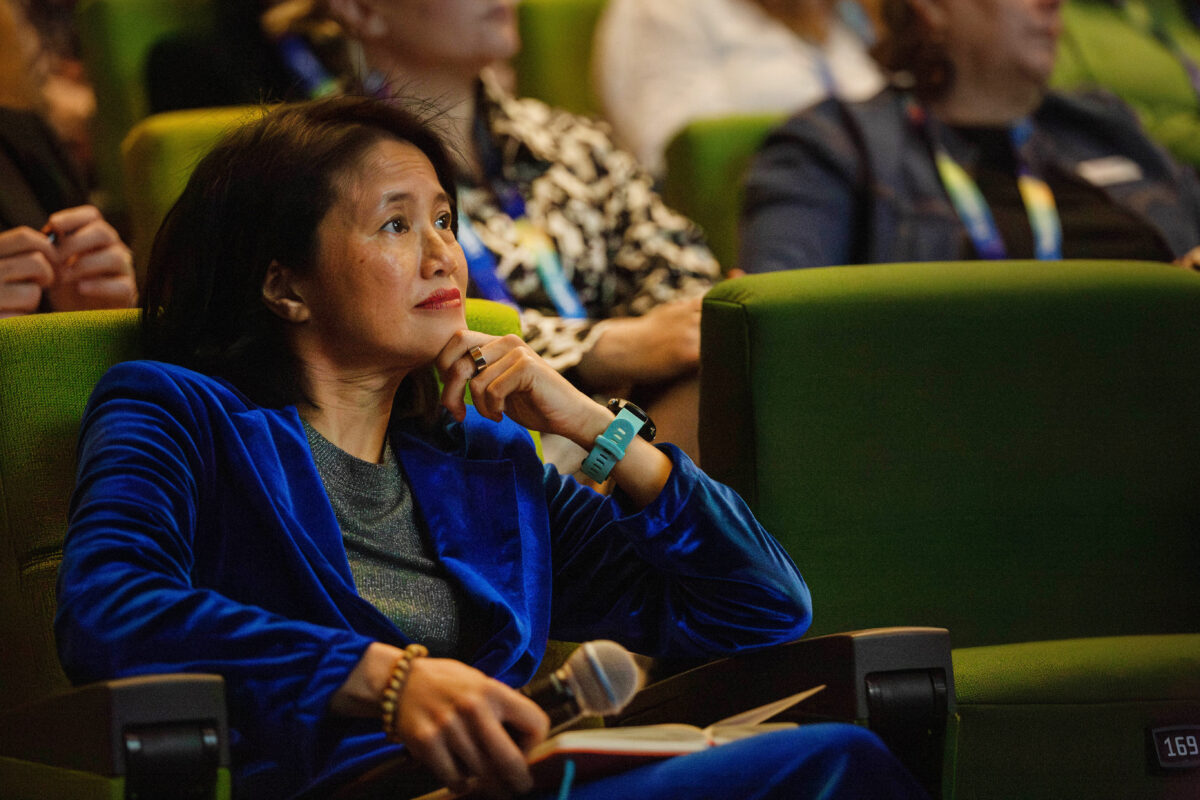How can HR leaders help businesses not only embrace new ways of working, but pioneer them? Speakers at day one of AHRI’s National Convention and Exhibition share their thoughts.
There’s no question that we’re living in a polycrisis world, with a 2.5 times increase in uncertainty over the past four years, relative to the historical 30 year average, says global future of work thought leader Ravin Jesuthasan in his keynote address at AHRI’s 2024 National Convention and Exhibition.
“We’ve had the war in Ukraine and what that’s done to the energy sector. We’ve got the climate crisis, we’ve got the geopolitical issues associated with the United States, China and the Middle East. And the icing on the cake is AI and its impact on the world,” he says.
As the world evolves at an unprecedented level, so too do the ways we work.
In this new world, Jesuthasan says we need to shift from the traditional model of “I learn, I do, I retire,” to a much more agile system: “I learn, I do. I learn, I do.”
This means transcending the legacy model of work – whether mindsets, processes or skill sets – which is quickly shifting from being an asset to a liability, preventing organisations from maintaining relevance and engaging in necessary organisational transformation.
“This makes [becoming] future-ready incredibly challenging,” he says.
Enabling the next generation enterprise
The organisations of the future must be both agile and networked, says Jesuthasan.
To do this, HR and leaders can “steward a shift from thinking about scale, efficiency and expertise” to instead focus on “speed, agility and execution… as we think about operating in a much more complex world where we need to test at speed, iterate, correct and learn from our mistakes.”
This requires a rethink of how we lead, he adds.
“[We need to go from] thinking about leadership as something at the centre of the top-down governance model, to more leadership from the edges of the enterprise, where innovation, diversity and the transformation of work has its highest payoff.”
It also requires another shift from a structural point of view. Prior to COVID-19, most organisations were what Jesuthasan calls “traditional, fixed, hierarchical structured organisations”.
Then, during and following the pandemic, we operated under a hybrid agile structure, which combined traditional structures with team-based models to address an environment that was uncertain and evolving in complexity.
“They can save 50,000 pounds per employee by releasing people from their sunset roles into their sunrise roles, as opposed to doing the old churn and burn where we fire a bunch of people with legacy skills and then pay above market premiums for the newer skills.” – Ravin Jesuthasan
Now, to prepare our organisations for the future of work, we need to focus on networked ecosystems, which he describes as completely agile and autonomous networks of teams – often self-governing – that can form and disperse seamlessly.
This type of work moves us out of the fourth industrial revolution, epitomised by factors such as the rise of AI and the gig economy – and into the future of “work without jobs”, described as:
- An agile work operating system that enables talent to flow to work as seamlessly as possible.
- A many-to-many relationship with skills and work
- Automation treated as a “work partner”
- The perpetual reinvention of organisations and people
- The democratisation of learning
- Human-centric work experiences.
Designing a new operating system
How can HR leaders design a new operating system that better supports the high degree of organisational agility required to thrive amid change and disruption?
Jesuthasan suggests adhering to the following four principles:
1. Start with the work itself
“Forget how we organise it, who’s doing the work or who might do the work, but [think about] the elements, tasks and activities that need to be performed today and into the future.”
Ensure there is clarity on the skills and expertise required and be open to receiving them from non-traditional avenues.
2. Achieve the optimal human-automation combination
“Organisations that consistently win in the age of AI are those that start with the work, not the ones who start with the technology.
“The ones that started with the work see [two] very nuanced outcomes: they see where highly repetitive rules-based work might be substituted – the dirty, dull and dangerous stuff that we don’t want to have humans doing for the most part – and they see where human ingenuity, critical thinking and expression of care and empathy can be augmented by these new technologies.
“We need to consider where this technology creates the space for more human work or the demand for more human skills.”

3. Consider the full array of the human work engagement
“This is about [considering] the best way for talent to engage with the work,” he says.
“Should they be an employee in a full-time job? Should they be a gig worker? Or perhaps the employee of an outsourcer?”
4. Ensuring talent can flow to work seamlessly rather than being fixed within a traditional job
We know that work, and therefore the skills required to do that work, are going to continue to change – and quickly. So organisations need to think about how they reduce or remove obstacles that prevent people with the right skills mix from moving through an organisation or industry so their skills can be brought to the projects that need them.
Underpinning all this is a culture of continuous learning.
“This is about learning, upskilling and reskilling being a strategic priority of the organisation. If you look at Standard Chartered Bank (SCB) and the transformation they’re going through towards a transition to net zero, learning is absolutely half of that strategic plan,” says Jesuthasan
“One of the things [my co-author Tanuj Kapilashrami, Chief Strategy & Talent Officer at SCB] has shown the board is that they can save 50,000 pounds per employee by releasing people from their sunset roles into their sunrise roles, as opposed to doing the old churn and burn where we fire a bunch of people with legacy skills and then go and pay above market premiums for the newer skills.
“So you can make this economic argument that can underpin their strategic plan for learning development.”
Ensure that skills are not just being developed to tick a box, but rather develop and redeploy them to where the work is needed at scale and speed.
“This captures this pivot from a mindset of employment to a mindset of employability,’ he says “HR plays a critical role in that shift.”
How do we drive these changes? Group intelligence.
To design these transformational new ways of working, we first need to consider the levers we pull to incite change at an enterprise level.
In her new book, ‘The Hive Mind at Work’, Siobhan McHale, Executive General Manager of People, Culture and Change at Dulux, explores a concept that works as an antidote to the command-and-control style of leadership that used to serve businesses in the past.
“This idea emerged in the 1600s from Sir Isaac Newton, who talked about hierarchy and command-and-control management… and Frederick Taylor [a US mechanical engineer of the same era] then propagated this idea of change being mechanistic and linear in a machine-like organisation.”
This leadership style rarely works at scale. You might be able to influence an individual or team with a prescriptive approach, but that rarely resonates with groups.
“Whenever I ask managers what their plan is to bring about change in complex ecosystems of groups, they usually have a blank face,” she says. “Because they’ve only been trained as functional managers.”

Instead, they need to be equipped with the skills to enable and influence change at scale. Rather than trying to create individual change champions, we should instead consider how to create change at an enterprise level, says McHale.
To do this, HR needs to understand and tap into “group intelligence” (GQ), building upon their existing IQ and EQ, which have previously been held up as the key skills required of all visionary leaders.
“These are necessary, but not sufficient in the volatile world we find ourselves in today,” says McHale. “We need to add that GQ, [which is] the ability to understand what’s going on in complex ecosystems and to be able to intervene in those groups to enable them to deliver work, grow and adapt. All three are present in successful leaders.
According to McHale, leaders who understand GQ can:
- Effectively see the bigger system
- Diagnose deeply-held patterns
- Explore hidden assumptions
- Make sense of complexity
- Design powerful interventions
- Co-create solutions
- Navigate ecosystem change
- Build adaptive capabilities of their organisation.
“They make a sense of complexity. So often in our organisations, it’s like a spider’s web. You look to your left, you see a disengaged workforce. You look to your right, you see a performance dip. You look up, you see customer complaints. You look down, you see a quality issue. Which of those threads do you pull? By pulling threads, sometimes you get more tangled.
“People with GQ are able to intervene in complex ecosystems and design powerful interventions. They’re not willy-nilly pulling at threads, but designing intentional and powerful interventions that help the ecosystem move in the desired direction.”

GQ-focused leaders also co-create their solutions, she says.
“‘[They] know that the answers don’t emerge from the executive suite. They know they need to get the group involved in order to emerge with the best solutions.”
The challenges organisations have grappled with over the last few years – from market disruption to digitisation – are a wake up call for what lies ahead, McHale warns.
“We have got to get better at [embedding] the GQ intelligence that is required to understand and navigate a complex ecosystem.”


This resonates completely with the change taking place within my organisation. There are some great insights here that I need to implement.
The ‘change and transformation’ effort needed by both individuals and corporations/businesses is significant. This will require a systematic and robust change management approach and plan to realise the benefits and ensure people and companies adapt to the new world order – be it AI complemented or otherwise. If not, the risk of change denial, resistance and/or conscious sabotaging to re-shift the paradigm will be hard to mitigate. While globalisation is the ‘new normal’ in a digitised 24/7 world, there is a critical need to ensure s expert local knowledge, business understanding and GQ insight / intelligence drive superior customer outcomes… Read more »